THE 10 BEST ADVANCED NORSE MYTHOLOGY BOOKS
This article picks up where my original list of The 10 Best Norse Mythology Books leaves off. If you’ve already immersed yourself in the kinds of beginner-level books that that article recommends and you find yourself wanting to go further into the ancient mythology and religion of the Norse, this list is for you. (This article was last updated in August of 2019.)
The first four books here are intermediate-level books that will deepen the reader’s knowledge of Norse mythology and religion in general. Then come two more primary sources that add to the ones already described in the beginner-level list. The last four books go into particular aspects of the topic: Odin, magic, the afterlife, and the relationship between the ancient Norse and Celtic religions.
If you find this list to be helpful enough that you decide to buy one or more of the books listed here, the best way you can say “thank you” is to buy whatever you decide to buy through the Amazon links provided at the end of each book’s description. When you do, I automatically get a small commission on your purchase with no extra cost or hassle for you whatsoever.
1. Dictionary of Northern Mythology
Rudolf Simek is one of today’s leading scholars of Norse mythology and religion. Dictionary of Northern Mythology is his magnum opus.
As the title implies, this book consists of a dictionary or encyclopedia of alphabetical entries on virtually any proper noun you’ll ever encounter in the study of Norse mythology. While this intent and structure make it similar to John Lindow’s Norse Mythology (#10 on the beginner-level list), the two books have different scopes and target audiences. Lindow’s book is written for newbies and is therefore more accessible, which is why it’s on the first list. Simek’s book is written for scholars and rigorous laypeople. Accordingly, it’s much more detailed and comprehensive, which is why it’s on this list.
This is one of those books that’s cited by virtually every other credible book in the field that has come out since its publication, and with good reason. As a handy, go-to reference source for the topic’s key terms and topics, Dictionary of Northern Mythology is unsurpassed.
Click here to view or buy Dictionary of Northern Mythology at Amazon.
2. The Viking Way: Magic and Mind in Late Iron Age Scandinavia
Neil Price is an archaeologist who specializes in Viking Age northern Europe. His great gift, in addition to the sheer depth of his knowledge of the Old Norse world, is his ability to find connections and implications in a body of data that hundreds of others before him have missed.
That ability and that wealth of knowledge are on full display in The Viking Way, which is actually Price’s doctoral dissertation. In The Viking Way (which used to carry the subtitle Religion and War in Late Iron Age Scandinavia), Price regales the reader with lavish descriptions of the techniques the Vikings used in their practice of magic and their practice of war, as well as the position the two occupied within the Vikings’ religion and worldview more broadly. By the end, Price is able to come to far-reaching conclusions that reshape our understanding of that religion and that worldview.
I’ve written a full review of The Viking Way here.
3. Myths of the Pagan North: Gods of the Norsemen
Christopher Abram’s Myths of the Pagan North consists of, in the author’s own words, “a history of myth-making in medieval Scandinavia.” It traces the Norse myths’ transmission and development from the Viking Age until well into the medieval period that followed. Our present-day knowledge of the Norse myths comes overwhelmingly from literary sources that were written during this time frame, so Abram’s survey covers essentially the entire life of the myths in the forms in which they’ve come down to us.
In addition to providing what’s probably, to date, the best single-volume overview and analysis of the literary sources, Abram considers a central paradox of the sources: generally speaking, the more information a source provides, the less reliable the source happens to be, and the most reliable sources tend to be those that provide the least information. Abram argues that, rather than forsaking the problematic sources (like the Eddas) or naively taking them at face value as faithful preservations of pre-Christian lore, we should approach them as steps in the ongoing process of the development of the Norse myths – which continues to this day.
Ultimately, Abram enables us to see the Norse myths as something more than static relics of a bygone time. Instead, we can see them as stories that are constantly being transformed and adapted, and you and I are potential participants in that process.
Click here to view or buy Myths of the Pagan North from Amazon.
4. Nordic Religions in the Viking Age
Thomas A. DuBois’s Nordic Religions in the Viking Age places Norse religion in its proper anthropological and historical context.
The Vikings’ religion didn’t exist in a vacuum, and DuBois refreshingly focuses on the many permutations it underwent across time and space, the other traditions it was influenced by, and those that were in turn influenced by it. He shows how it was part of the ceaseless process of give-and-take that characterized the wider ancient and medieval European world, paying particular attention to the reciprocal interactions with the religions of the Sámi, Celts, Romans, and, yes, even the Christians.
DuBois shows how Norse religion was never a monolithic or static phenomenon. Central elements of the cultic traditions of one town might have been strikingly alien to the town in the next valley, not to mention another settlement hundreds of miles away across the ocean. Differences across time might have been even more marked.
Nordic Religions in the Viking Age is therefore essential reading for anyone who wants to understand the Vikings’ religion more fully than one can by merely studying it as an isolated, uniform phenomenon.
Click here to view or buy Nordic Religions in the Viking Age from Amazon.
5. Heimskringla: The History of the Kings of Norway
The Heimskringla is one of the two major works by the famous medieval Icelandic scholar Snorri Sturluson – the other, of course, being the Prose Edda (which is on the beginner-level list).
The Heimskringla is a collection of sagas that recount the legendary lives of the ancient and early medieval Norwegian kings. While the Heimskringla isn’t as directly concerned with mythology or religion as is the Prose Edda, it nevertheless provides a wealth of extremely valuable information along the way. This is especially true of the collection’s first saga, The Saga of the Ynglings or the Ynglinga Saga. The first part of that saga is almost entirely devoted to discussing the deeds and abilities of the gods and goddesses. Other sagas in the collection drop clues about the pre-Christian religious practices of the Norse.
Lee M. Hollander’s translation is by far the best English translation out there. Whereas most other translations are clumsy and/or outdated, Hollander’s reads like great literature.
6. Germania
The Roman historian Tacitus has bequeathed to us the fullest account of the Germanic tribes as they were during the time of the Roman Empire. His Germania, written in about 100 AD, covers virtually every aspect of the lives and customs of the Germanic tribes, including lengthy discussions of their religion.
Some of Tacitus’s remarks accord very well with what we know of the religion of the Norse, the descendants of some of the tribes about whom Tacitus wrote. Others help to flesh out the picture by giving us something to compare with the otherwise-obscure points from the later Old Norse sources. Still others sound like halfway points between the later Norse religion and the earlier Proto-Indo-European religion, enabling us to glimpse something of the development of Germanic religion over time.
Germania is indispensible for anyone who’s interested in the religion of the Germanic tribes, as well as anyone who wants to understand the religion of the Norse and/or other Germanic peoples more fully.
7. The One-Eyed God: Odin and the (Indo-)Germanic Männerbünde
The primary purpose of Kris Kershaw’s The One-Eyed God: Odin and the (Indo-)Germanic Männerbünde is to explain why Odin was thought to have only one eye. In the myths, of course, he sacrificed it for wisdom, but why was the particular symbolism of a lost eye chosen to represent that?
In order to answer that question, Kershaw considers much of the rest of the body of symbolism that was connected to Odin and his cult among the Vikings, such as the god’s many roles and the animals with which he was associated. But to understand the origin and significance of these symbols, as well as their relations to one another, Kershaw takes us much farther afield and back in time. The religious practices of the Proto-Indo-Europeans, and their descendants in India, Greece, Ireland, and elsewhere, are discussed as part of Kershaw’s analysis.
Men’s military societies (“warbands” or männerbünde) feature especially prominently, since one of Odin’s main roles was the leader of the divine warband. Kershaw’s descriptions and analyses of these societies – including their offshoots in the Norse world, the berserkers and úlfheðnar – are among the most detailed and most revealing out there.
The One-Eyed God is essential reading for anyone who’s particularly interested in Odin, his worship, and the ecstatic military groups like the berserkers who were especially closely connected with him.
8. Trolldómr in Early Medieval Scandinavia
This 100-page essay on Viking Age magic by Catharina Raudvere is probably the best scholarly introduction to pre-Christian Norse magic (or trolldómr, the word Raudvere uses for it) out there. It’s included as one of three pieces in Witchcraft and Magic in Europe, Volume III: The Middle Ages, edited by Bengt Ankarloo and Stuart Clark.
Raudvere covers the many different types of magic in the Viking world – runic magic, galdr, seiðr, etc. – as well as more general Norse views on what magic was and how it fit into the rest of their belief system. The Icelandic sagas prove to be an especially fruitful source of examples here. Personally, I’ve found Raudvere’s discussion of how the Norse attributed amazing powers to the spoken word to be especially illuminating, but the whole essay is filled with a great deal of insight.
Trolldómr in Early Medieval Scandinavia is highly recommended for anyone who wants to understand Norse magic as the Vikings themselves did.
Click here to view or buy Witchcraft and Magic in Europe, Volume III: The Middle Ages at Amazon.
9. The Road to Hel: A Study of the Conception of the Dead in Old Norse Literature
The Road to Hel: A Study of the Conception of the Dead in Old Norse Literature is the first major book written by Hilda Roderick Ellis Davidson, the esteemed Old Norse scholar who also authored Gods and Myths of Northern Europe, one of the books on the beginner-level list. Even though The Road to Hel was originally published in 1943 (before H.R. Ellis had acquired the “Davidson” part of her name), it’s still remarkably current. Present scholars often cite it.
The Road to Hel deals with Viking Age perceptions of what happened to a person after death, as well as the continuing interactions between the dead and the living. The latter were comprised of things like funerary customs, ancestor worship, occasional destruction of the corpses of those of the dead who proved to be unruly, visionary journeys to the land of the dead, and necromancy.
Along the way, the book also contains extensive discussions of the ancient Norse conception of the “soul” or the parts that comprise a person, magic, and the overlap between dead ancestors and other kinds of beings such as elves, land spirits, Valkyries, the elusive dísir, and others.
The Road to Hel remains perhaps the foremost study of Viking Age conceptions of death and the afterlife, and is therefore essential reading for anyone interested in that topic. Those who are interested in the aforementioned associated topics will also find it extremely useful. Click here to view or buy The Road to Hel at Amazon.
10. Myths and Symbols in Pagan Europe: Early Scandinavian and Celtic Religions
Toward the end of H.R. Ellis Davidson’s very productive life, she turned her attention to the mythology and religion of one of the Germanic peoples’ neighbors, the Celts. Myths and Symbols in Pagan Europe was her highest achievement during this period.
The book compares the mythology and religion of the Celts to that of the Norse and other Germanic peoples, illustrating many of the powerful and compelling commonalities between the two traditions. This approach is especially important since the sources of our knowledge of the Celts and Germanic peoples are few in number and written at a late date, usually by people who had already converted to Christianity. None of them provide anything close to a full or comprehensive picture, but all of them have clues to contribute.
What Ellis Davidson did in this book is assemble those clues and provide as close to a full or comprehensive picture of pre-Christian northern European religion as she could. The fact that she drew on both Celtic and Germanic sources enabled her to form and present a fuller picture than would have been possible to by drawing on the material of either one of those two closely-related traditions alone.
Myths and Symbols in Pagan Europe is highly recommended for anyone who’s interested in either Celtic or Norse/Germanic mythology. For those who are interested in both, this book is simply indispensable.
Click here to view or buy Myths and Symbols in Pagan Europe at Amazon.
If you’ve enjoyed this list, you might also be interested in these other guides of mine:
• The 10 Best Norse Mythology Books
• The 10 Best Books on the Vikings
• Resources for Learning the Old Norse Language
• The 10 Best Books on the Runes
Finally, if you want to learn more about the Nordic shamanism’ conception of learning and experiences in general .
Looking for more great information on Nordic shamanism ?
While this site provides the ultimate online introduction to the topic, my book Northern shaman provides the ultimate introduction by an Völva and a shaman who are not like the others. I’ve also written a popular list of The 10 Best Norse Mythology Books, which you’ll probably find helpful in your pursuit.




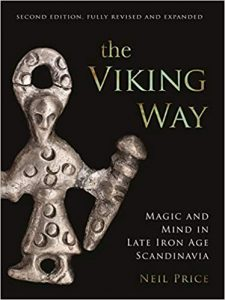
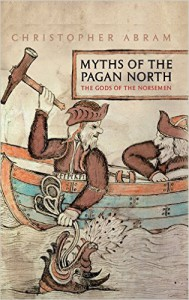
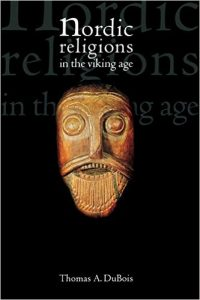
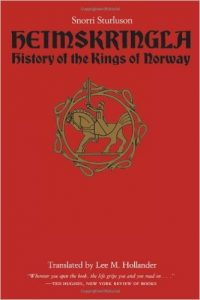



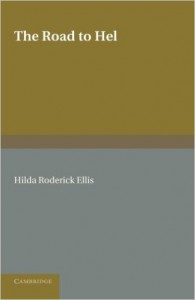
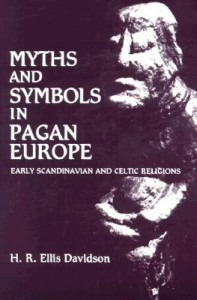
Create Your Own Website With Webador